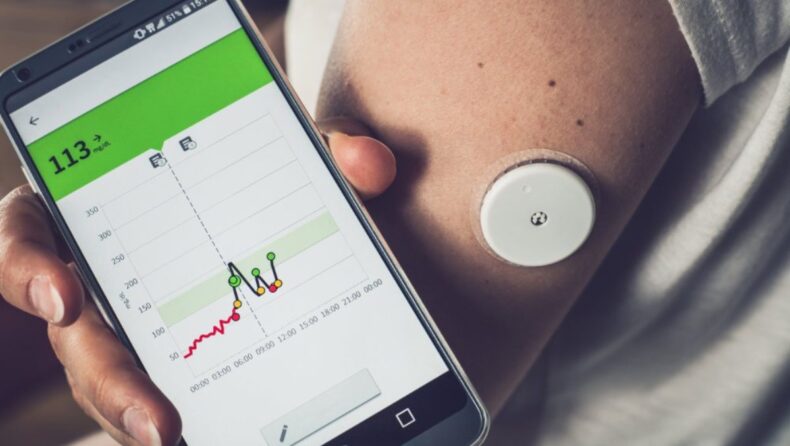A 30-year-old individual experienced a jolt of surprise upon receiving his blood test results, which indicated that he had developed Type-2 diabetes, a persistent metabolic disorder leading to heightened blood glucose levels.
Despite being acquainted with the challenges posed by diabetes due to two family members grappling with the condition, his greatest apprehension stemmed from contemplating the prolonged duration he would need to manage this chronic ailment and the potential health issues it could entail.
India ranks as having the world’s second-largest population of adults affected by diabetes. A concerning pattern has emerged, manifesting in the diagnosis of diabetes among individuals below the age of 40.
Correspondingly, in the United Kingdom, Diabetes UK has reported a substantial 23% surge in diabetes diagnoses among people under 40, rising from approximately 120,000 cases between 2016-17 to 148,000 cases between 2020-21. Despite the persistently elevated prevalence of diabetes, the state of awareness, treatment, and management remains notably insufficient.
In contemporary times, numerous individuals, much like the aforementioned 30-year-old, are embracing the usage of Continuous Glucose Monitoring Systems (CGM). These systems represent innovative glucose monitoring devices that tirelessly track blood glucose levels around the clock.
CGM to monitor Diabetes
Positioned on the back of the arm, the glucose sensors work persistently to monitor glucose levels within interstitial fluid. These sensors are linked to an electronic processing monitor via either wired or wireless transmitters, ensuring a comprehensive and real-time understanding of glucose fluctuations.
The device offers users instantaneous measurements, facilitating a heightened comprehension that empowers informed decisions regarding activities and dietary choices. This, in turn, aids in effectively managing glucose levels within the optimal range.
The significance of monitoring glucose levels in individuals dealing with uncontrolled diabetes mellitus cannot be overstated. Self-monitoring glucose meters have played a crucial role in fine-tuning therapy over the years. This practice is complemented by a holistic approach encompassing patient education, consistent adherence to medication regimens, dietary limitations, and regular physical activity.
While self-monitoring of blood glucose (SMBG) results can be a dependable resource, certain factors such as application errors, the inconvenience of frequent daily testing, and the potential for manual errors in blood glucose readings can introduce the possibility of treatment inaccuracies. However, thanks to technological advancements and an improved understanding of the benefits of continuous glucose monitoring (CGM) in diabetes management, CGMs are experiencing an increasing uptake on a global scale.
Dr. V Mohan, Chairman of Dr. Mohan’s Diabetes Specialities Centre, sheds light on the increasing acceptance of CGMs by stating, “The adoption of CGM sensors is experiencing a noticeable rise due to their profound impact on modifying behavior. Individuals are inclined to explore various dietary choices and observe how these affect their glucose levels. A particularly valuable aspect is the ability to track a novel metric known as time in range (TIR), indicating the percentage of the day during which blood sugars remain well-regulated.

This crucial information reveals the timing of elevated and normal sugar levels. Therefore, I strongly advocate for the integration of continuous glucose monitoring in diabetes management. They should be regarded as an additional vital parameter in the assessment of an individual’s diabetic status.”
“Real-time Continuous Glucose Monitoring (RT-CGM) proves to be an invaluable resource for individuals with Diabetes mellitus, equipping them with a wealth of data that serves as a compass for shaping dietary habits, exercise routines, behavioral adjustments, and medication choices in consultation with their healthcare provider. The advantages can potentially extend to individuals with prediabetes as well.
By leveraging data from RT-CGM, individuals can make informed modifications to their behaviors, fostering a proactive approach to diet and exercise. This proactive stance can play a pivotal role in curbing the advancement of diabetes or even reinstating a state of normal glucose tolerance,” emphasized Dr. Saket Kant, Senior Consultant-Endocrinology & Diabetes, Max Super Speciality Hospital.
Research conducted on CGM has revealed noteworthy enhancements in managing glycemic levels, encompassing reductions in HbA1c, average blood glucose readings, and occurrences of hypoglycemic events.
The continuous glucose monitoring market in India exhibits a significant level of consolidation. Recognizing the substantial potential for CGMs within the country, numerous companies have introduced glucose-monitoring devices into the market.













